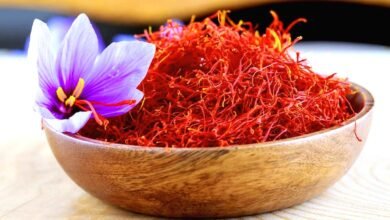How to Incorporate More Plant-Based Protein in Your U.S. Diet
Boost your U.S. diet with plant-based protein Discover easy swaps tasty recipes and top sources for a healthier lifestyle.

Plant-based protein is becoming a cornerstone of modern American diets as more people seek healthier, sustainable, and ethical food choices. Whether driven by concerns over heart health, environmental impact, or animal welfare, swapping animal proteins for plant-based alternatives offers numerous benefits. However, many Americans still struggle with how to make this shift seamlessly while ensuring they meet their daily protein needs. This guide explores practical, delicious, and nutritionally sound ways to integrate more plant-based protein into everyday meals without sacrificing flavor or satisfaction.
The rise of plant-based protein in the U.S. reflects a growing awareness of its advantages lower saturated fat, higher fiber, and reduced risk of chronic diseases compared to traditional meat-heavy diets. Yet, misconceptions remain about whether plant proteins can provide complete nutrition. From lentils and tofu to quinoa and nuts, a diverse array of options makes it easier than ever to enjoy protein-rich, plant-powered meals. Whether you’re fully transitioning to a plant-based lifestyle or simply looking to reduce meat consumption, this article will help you navigate the best sources, meal ideas, and strategies for a balanced and satisfying diet.
How to Incorporate More Plant-Based Protein in Your U.S. Diet
Nutritional Powerhouse Without the Downsides of Animal Protein
Unlike animal-based proteins, which often contain saturated fats and cholesterol, plant-based protein sources provide clean, nutrient-dense alternatives. Foods like lentils, chickpeas, quinoa, and tofu deliver high-quality protein while also supplying essential fiber, vitamins (such as folate and B vitamins), minerals (like iron and magnesium), and antioxidants.
Reduced Risk of Chronic Diseases
Research consistently shows that diets high in plant-based protein are linked to lower risks of heart disease, type 2 diabetes, and certain cancers. The fiber in plant proteins helps regulate blood sugar levels, while the absence of harmful animal fats contributes to improved cardiovascular health. Additionally, the phytonutrients and antioxidants found in plants offer protective effects against cellular damage and chronic inflammation.
Supports Weight Management and Longevity
Plant-based proteins are typically lower in calories and higher in fiber than animal proteins, promoting satiety and reducing overeating. This makes them ideal for maintaining a healthy weight. Studies also suggest that populations consuming more plant-based diets tend to have longer lifespans, likely due to the reduced burden of chronic disease and improved metabolic health.
Top Plant-Based Protein Sources
Legumes Beans Lentils and Chickpeas
Legumes are among the most affordable and versatile plant-based protein options. Black beans, kidney beans, lentils, and chickpeas provide between 15-18 grams of protein per cooked cup. They can be used in soups, stews, salads, and even blended into dips like hummus. Lentils, in particular, cook quickly and work well in dishes like veggie burgers, curries, and pasta sauces.
Soy Products Tofu Tempeh and Edamame
Soy-based foods are complete proteins, meaning they contain all nine essential amino acids. Tofu, with its neutral taste, absorbs flavors well and can be grilled, stir-fried, or scrambled. Tempeh, a fermented soy product, has a nutty flavor and firm texture, making it ideal for sandwiches and grain bowls. Edamame (young soybeans) is a great snack or salad topping, offering about 17 grams of protein per cup.
Nuts and Seeds Almonds Chia and Hemp
Nuts and seeds are nutrient-dense sources of protein and healthy fats. Almonds, peanuts, and cashews provide around 6-8 grams of protein per ounce. Chia and hemp seeds are excellent additions to smoothies, oatmeal, and yogurt, delivering omega-3 fatty acids alongside protein. Nut butters, such as peanut or almond butter, also make for convenient high-protein spreads.
Whole Grains Quinoa Farro and Brown Rice
Unlike refined grains, whole grains retain their protein and fiber content. Quinoa stands out as a complete protein, offering 8 grams per cooked cup. Farro, bulgur, and brown rice are also great choices for boosting protein intake in grain-based dishes.
Plant-Based Meat Alternatives
For those transitioning away from meat, products like Beyond Meat and Impossible Burgers provide familiar textures and flavors while being entirely plant derived. While these should not replace whole-food protein sources entirely, they can help ease the shift to a plant-based diet.
Practical Tips for Incorporating Plant-Based Protein
Start with Meatless Mondays
Transitioning to plant-based eating becomes much more approachable when you start with small, manageable steps like dedicating just one meatless day per week. This gradual approach allows your palate to adjust while you discover how satisfying and flavorful plant-based proteins can be. For your weekly plant-based day, try hearty, protein-rich dishes that mimic familiar textures and flavors.
Blend Proteins into Smoothies and Snacks
For an easy protein boost, upgrade your snacks and smoothies with smart plant-based additions. Blend silken tofu into fruit smoothies for a creamy texture that adds 8-10 grams of protein per half-cup, or stir in a scoop of pea protein powder for an extra 15-20 grams without altering flavor. Nut butters like almond or peanut butter not only contribute 3-4 grams of protein per tablespoon but also add healthy fats that keep you satisfied.
Experiment with Global Cuisines
Global culinary traditions offer a treasure trove of delicious, protein-packed plant-based dishes that have sustained cultures for centuries. Indian cuisine shines with protein-rich dals (lentil stews) and chana masala (spiced chickpeas), while Ethiopian tradition brings us flavorful misir wat (spiced red lentil stew) served with injera, a fermented teff flatbread packed with amino acids.
Read Labels for Protein Content
When selecting packaged plant-based protein products like veggie burgers or protein bars, it’s crucial to become a savvy label reader to maximize nutritional benefits. Look for options that provide at least 10-15 grams of protein per serving, with whole food ingredients like pea protein, lentils, or quinoa listed near the top of the ingredient list.
Combine Complementary Proteins
While many plant-based proteins are considered “incomplete” because they may be low in one or two essential amino acids, this concern is easily addressed through strategic food combinations. The concept of complementary proteins pairing different plant foods to create a complete amino acid profile has been a cornerstone of vegetarian and vegan nutrition for decades.
Read More: How Climate Change Is Affecting Health in the U.S. What You Can Do
Conclusion
Plant-based protein offers a powerful way to enhance your health while supporting environmental sustainability. By incorporating diverse sources like beans, lentils, tofu, and quinoa into your meals, you can enjoy delicious, nutrient-rich alternatives to animal proteins without compromising on taste or satisfaction. Whether you’re making small changes or fully embracing a plant-forward diet, every step toward more plant-based protein contributes to better well-being and a lighter ecological footprint.
Making the shift doesn’t have to be overwhelming start with simple swaps, experiment with new recipes, and gradually expand your plant-based protein choices. With growing availability and creative culinary options across the U.S., adopting this approach has never been easier. By prioritizing plant-based protein, you’re not just nourishing your body but also participating in a positive movement toward healthier living and a more sustainable food system. Every meal is an opportunity to make a meaningful difference.
FAQs
Can you get enough protein from plants alone?
Yes, a well-planned plant-based diet can provide all essential amino acids through varied protein sources like beans, lentils, tofu, and quinoa.
What are the best high-protein plant-based snacks?
Roasted chickpeas, edamame, nut butter with whole-grain toast, and protein smoothies are excellent options.
Is plant-based protein better for weight loss?
Many plant proteins are lower in calories and higher in fiber than animal proteins, which can support weight management.
Do plant-based meats offer the same nutrition as whole foods?
While convenient, they should complement, not replace, whole-food protein sources like beans and lentils for optimal nutrition.
How can I make plant-based meals more filling?
Combine proteins with healthy fats (avocado, nuts) and fiber-rich vegetables to enhance satiety and balance meals.











